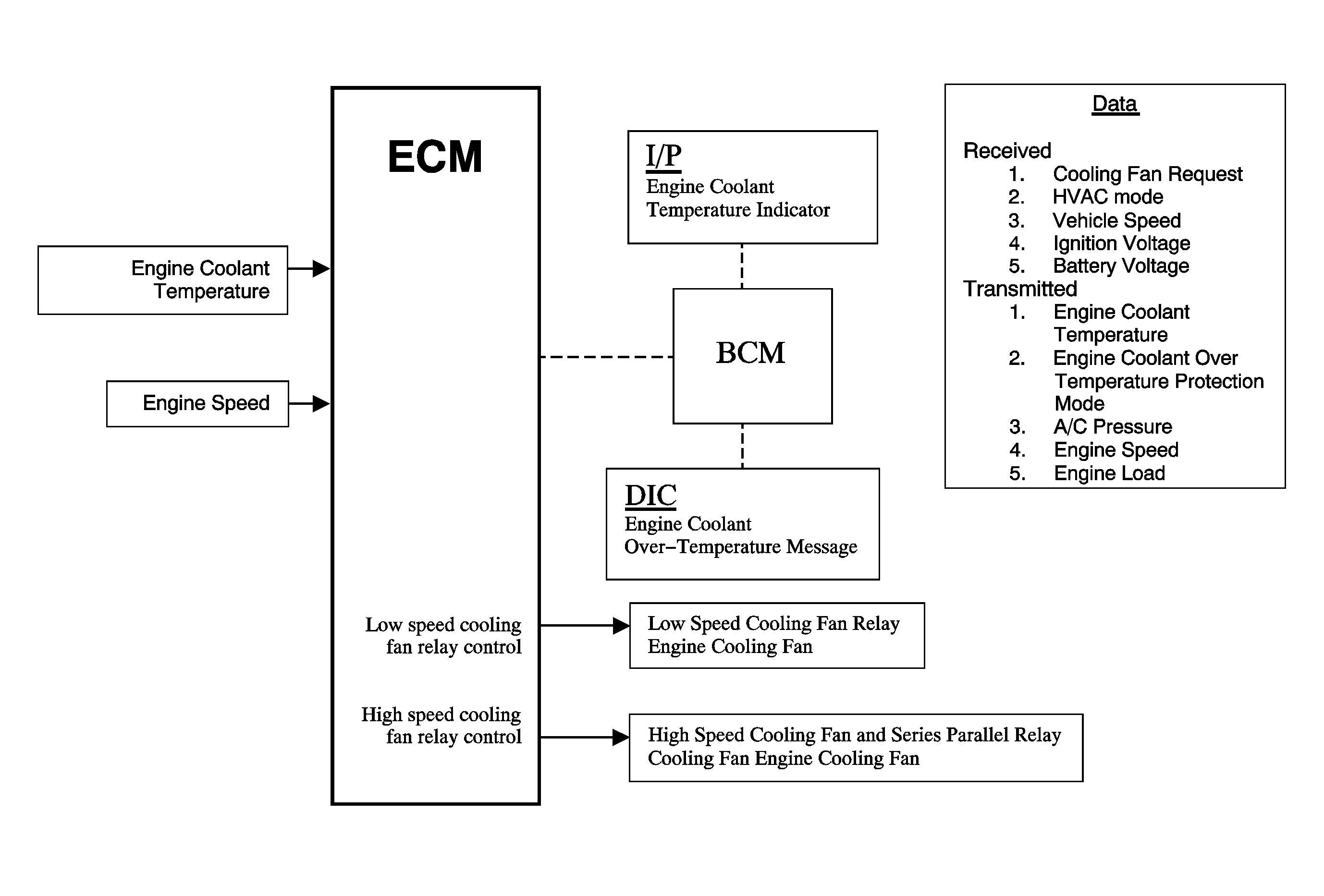
The engine cooling fan system consists of 2 electrical cooling fans and 3 fan relays. The relays are arranged in a Series/Parallel (S/P) configuration that allows the engine control module (ECM) to operate both fans together at low or high speeds. The cooling fans and fan relays receive battery positive voltage from the underhood fuse block.
During low speed operation, the ECM supplies the ground path for the low speed fan relay, which is fan 1 relay 33, through the low speed cooling fan relay control circuit. This energizes the low speed fan relay coil, closes the relay contacts, and supplies battery positive voltage from the fan 1 fuse 27 through the cooling fan motor supply voltage circuit to the left cooling fan. The ground path for the left cooling fan is through the series/parallel relay, which is fan 3 relay 32, and the right cooling fan. The result is a series circuit with both fans running at low speed.
During high speed operation, the ECM supplies the ground path for the low speed fan relay through the low speed cooling fan relay control circuit. After a 3-second delay, the ECM supplies a ground path for the series/parallel relay and the high speed fan relay, which is fan 2 relay 31, through the high speed cooling fan relay control circuit. This energizes the high speed fan relay coil, closes the relay contacts, and provides a ground path for the left cooling fan. At the same time, the high speed fan relay coil is energized closing the relay contacts, and provides battery positive voltage from the high fan fuse on the cooling fan motor supply voltage circuit, to the right cooling fan. During high speed fan operation, both engine cooling fans have their own ground path. The result is a parallel circuit with both fans running at high speed.
When the request for fan activation is withdrawn, the fan may not turn OFF until the ignition switch is moved to the OFF position or the vehicle speed exceeds approximately 10 mph. This is to prevent a fan from cycling ON and OFF excessively at idle.
